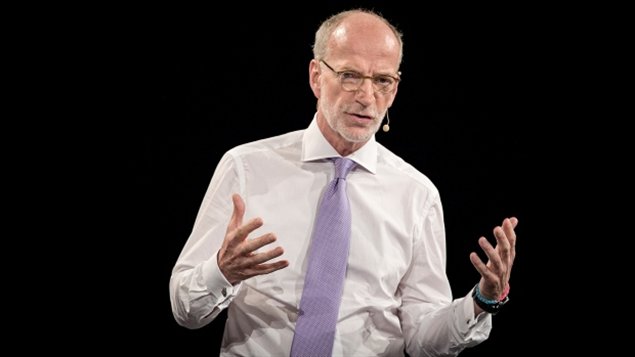CBC president and CEO Hubert T. Lacroix announced the plan and the vision for the future of Canada’s English and French public broadcasters today.
CBC/Radio Canada will shift priorities from television and radio to digital and mobile services, in a move that will reduce staff, shorten supper-hour news broadcasts and end most programs produced in-house, Lacroix told an audience of employees today.
Lacroix said, “To be the public broadcaster, we don’t need to be always the producer.”
“We used to lead with television and radio. Web came and then mobility came. We are reversing, we are inverting the priorities that we have,” Lacroix said, referring to the broadcaster’s 2020 strategy. “We’re going to lead now with mobility, we’re going to lead with whatever widget you use.

“You’re going to see an investment in mobility that’s going to rise as the investment in perhaps television … is reduced.”
This means cuts to staff, but Lacroix said they would be taken in prudent steps. The corporation will have 1,000 to 1,500 fewer employees in 2020, in addition to the reductions announced to date.
About 1,000 employees are now eligible for retirement, and through attrition, about 300 leave every year, according to the broadcaster.
It was announced in April, that funding shortfalls and revenue losses forced the public broadcaster to cut $130 million from its budget this year, a move the CBC said will eliminate 657 jobs over the next two years. It also prevents the network from competing for the rights to broadcast professional sports in the future. CBC is currently broadcasting the World Cup.
‘We’re in the business of content’
There are also plans to cut the real estate holdings in half by approximately two million square feet.
Lacroix said, at the Montreal station, for example, there will be a “substantial reduction in square feet.” Toronto will also try to reduce its real estate by acquiring new tenants.
“If there should be an offer on the building, yes, we’d take it, but the offer on the building would not necessarily mean that we’d move away. We’d become a tenant.
“We’re not in the business of real estate. We’re in the business of content,” Lacroix added.







For reasons beyond our control, and for an undetermined period of time, our comment section is now closed. However, our social networks remain open to your contributions.